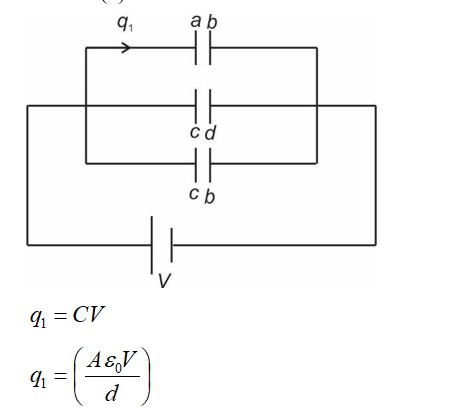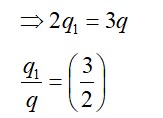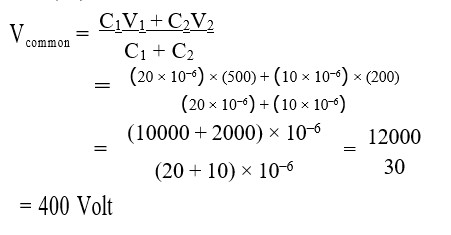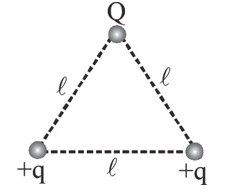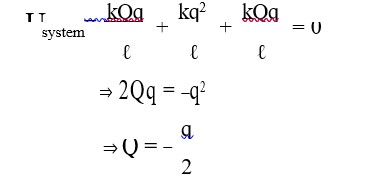A certain charge Q is divided into parts q and (Q – q). How should the charges Q and q be divided so that q and (Q – q) placed at a certain distance apart experience maximum electrostatic repulsion?
A certain charge Q is divided into parts q and (Q – q). How should the charges Q and q be divided so that q and (Q – q) placed at a certain distance apart experience maximum electrostatic repulsion?
Option 1 -
Option 2 -
Option 3 -
Option 4 -
Q = 3q
-
1 Answer
-
Correct Option - 3
Detailed Solution:Here r is fixed
For maxima or minima of force, its first derivative should be zero.
Since second derivative is always negative so maxima will occur at this value of q.
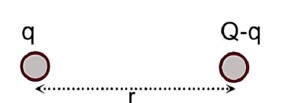
Similar Questions for you
For force between q1 and q2 is maximum, q1 = q2
When positive charge moves from low potential to high potential region, work is done against electric field and potential energy increases.
Taking an Exam? Selecting a College?
Get authentic answers from experts, students and alumni that you won't find anywhere else
Sign Up on ShikshaOn Shiksha, get access to
- 65k Colleges
- 1.2k Exams
- 679k Reviews
- 1800k Answers


